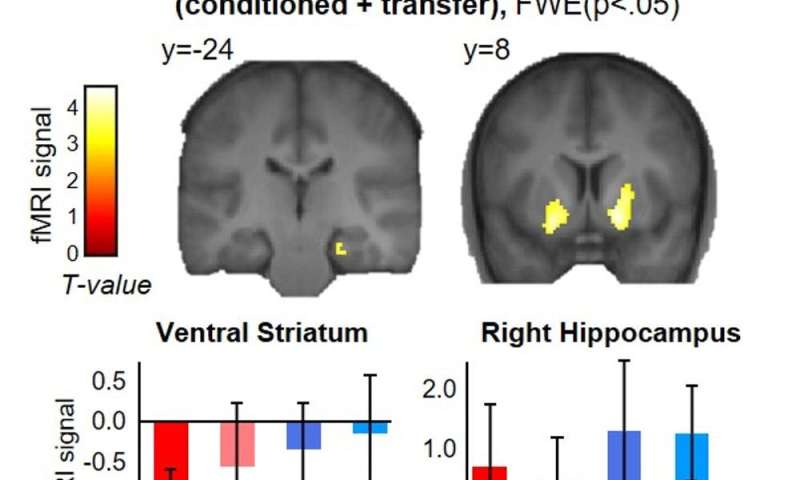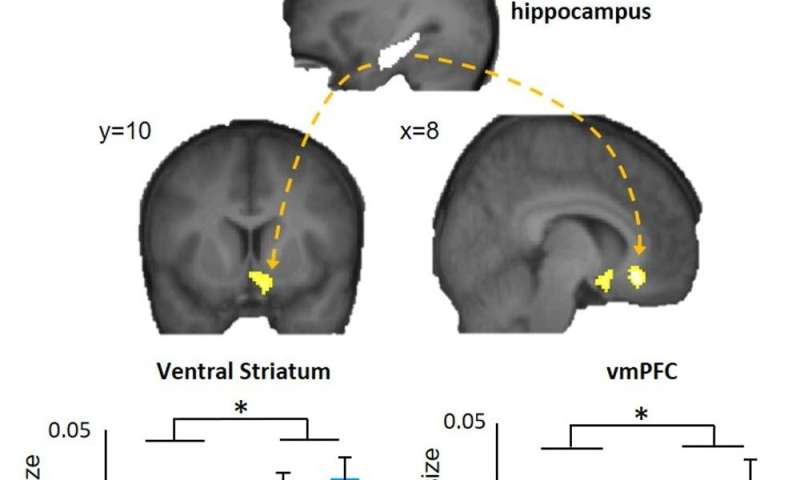Is money for learning a good idea? The tricky neuroscience of money and memory


Reward has many interesting functions, but knowing how to use it in learning and boosting memory is not as straightforward as one would think. From gamification to paying for good grades, educators have been trying out different combinations of intrinsic and extrinsic rewards to arrive at the ideal reinforcement schedule that would favor long-term motivation for learning.
From experience, we know that extrinsic rewards – points, money, treats—rarely motivate us for long-haul projects with uncertain outcomes. Still, they can get us to develop habits we may need a push for, such as exercising more, eating less sugar, or learning facts about which we are not particularly curious.
Some rewards work better than others, and extrinsic rewards are the trickiest of them all. For instance, learning associations with the prospect of obtaining money for remembering them results not only in better memory but also in better relearning weeks later when the associations had already been forgotten. The neuroscience of reward can be particularly useful in elucidating what type of reward and how much of it to give to boost learning.
Dopamine and memory
Motivational drive, triggered extrinsically or intrinsically, manifests in the brain as phasic releases of dopamine, the neurotransmitter that enables fast reward learning—a fundamental mechanism that enables most creatures with a brain to remember the important things in life: everything related to reward.

In brain language, reward is computed in “common currency” that is subjective and relative. One way to measure how much of that currency something is worth is to examine the fMRI BOLD signal change in the ventral striatum – the central structure of the human reward system, a part of which is also responsible for the feeling of hedonic pleasure.
When the BOLD signal change is positive, it means that the brain is experiencing reward or is anticipating it. The signal is especially high for receiving a surprise reward (a.k.a., “positive prediction error”). Conversely, the signal is reduced—literally pausing dopaminergic transmission by an internal “teacher”—when the reward is less than expected. In other words, when you gambled and lost, got a lower grade than you believe you deserve, or experience something that used to be rewarding but for whatever reason no longer is, the reward system deactivates, going below baseline, to teach you that this is unrewarding (“negative prediction error”).
Thinking fast
However, all of these adaptations of the ventral striatum happen pretty quickly—on an order of fractions of a second. Reward and memory processes (in the hippocampus) interact very tightly in many learning situations, some of which cast a shadow on the use of quick rewards in the context of education (money for grades, anyone?) or nutrition (money for eating vegetables?). It turns out that extrinsic reward is effective as an incentive for learning only in the short term and a February 2021 study shows that it can actually disturb future learning.
In an fMRI experiment, participants were asked to associate pictures with one of six positions on the screen. Spatial learning relies on the hippocampus and that is why it was a good model for any declarative and semantic memory formation—the type we use to remember facts. The pictures had a history—for half of them the participants won 1 Swiss franc in an earlier easy task. For the other half, they’d won 10 cents.
When their memory was tested 24 hours later, almost all of the participants had poorer memory accuracy for locations of those previously highly rewarded images. And most notably, the BOLD signal in the ventral striatum was surprisingly reversed: higher for low reward than for high reward, suggesting a perceived disappointment (or reward devaluation; a negative prediction error). Because the ventral striatum is tightly coupled with the hippocampus, the signal in the hippocampus was also decreased, even 24 hours later, and that is what led to poorer memory recall.

The second time around, rewards are devalued
The lesson here is that if we once relied on extrinsic incentives such as money or grades to learn, it will be harder to learn new related information when that incentive is gone. Neuroscience demonstrates why due to this subconscious process of devaluation, not only will we be more likely to procrastinate learning new things, but also the learning outcome may be poorer due to the absence of reward. The crux of the brain’s valuation system is that it is quite automatic and unconscious. This is why “points for memory” and “grades for learning” should be used sparingly to not let our motivation rely solely on this fragile, flipping and memorably sticky extrinsic trigger of reward signal.
So if you are someone who responds well to rewards, do not rely too much on points-based learning apps and don’t learn things for money—it may quickly turn your ventral striatum and the entire dopaminergic system against you. This will undermine not only your intrinsic motivation but also your memory.
Source: Read Full Article




